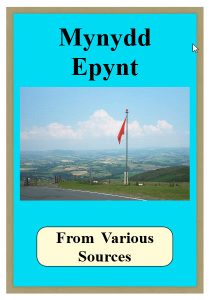I WILL NOW TURN TO THE PROCESS OF EVICTION. I want to deal with the way in which the intentions of the War Office were communicated to the local people, the emotional and practical responses of the people, and the way in which protests against the eviction were expressed.The first indication that Mynydd Epynt would be taken over was provided in an informal manner. On a Monday in mid September 1939 a khaki coloured Hillman Minx visited several farms and the primary school. It was driven by someone described by a male onlooker as a very attractive blond ATS girl, and she was accompanied by an army captain. The captain’s task was to explain that the War Office were thinking of taking over the area and he was required to carry out a survey. See Ronald Davies, Epynt Without People, Talybont, c 1971.Memories recorded by Epynt residents suggest that from the beginning the War Office intended to take an authoritarian approach to the process of eviction. Edna Williams was present when the captain visited her home. Her father asked him “What if we cannot find somewhere else to go?”, to which the reply was “Then you will be thrown out on the road”. There was no attempt to consult the local people on the general principle of eviction or on any aspect of the way in which it would be put into practice.Left:The site of Cilieni School School in 1940
At Cilieni School the captain spoke to the teacher, Mrs Olwen Davies, apparently in front of the pupils. They would not, however, have understood much of what he said as he spoke in English. Mrs Davies was immediately distressed and alarmed, but found herself unable to pass on to the children the information she had received. She endeavoured to complete the last one or two lessons of the day as normally as possible,
